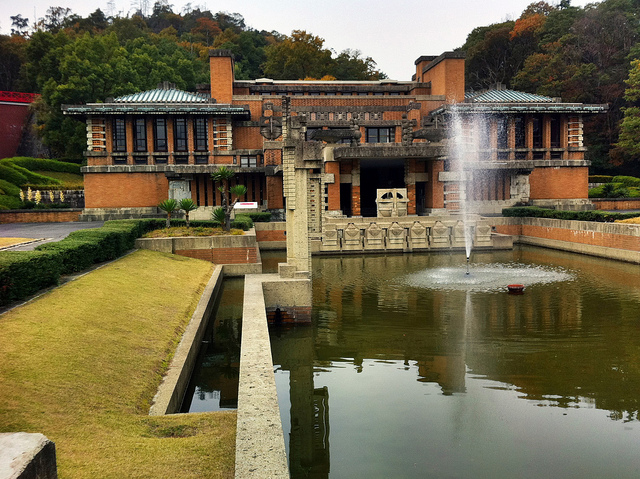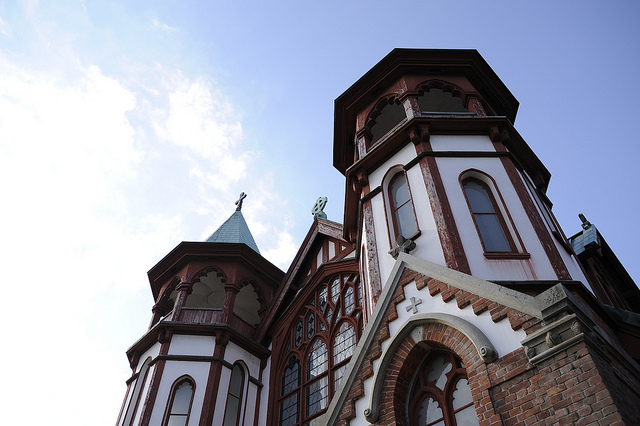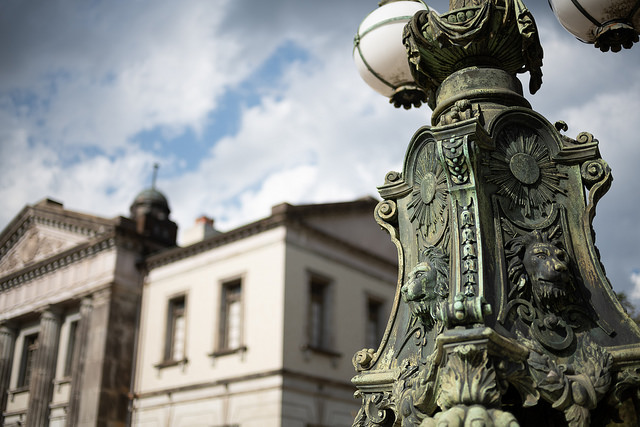Sep 30, 2015
Take a Journey Through Time at Meiji Mura
Have you aver wanted to travel back in time, to see what life was like in another era? Well, at Meiji Mura you can do just that.
Overlooking picturesque lake Iruka, Meiji Mura (meaning ‘Meiji Village) is an open-air museum on the outskirts of Inuyama. It is home to over sixty buildings sourced from all around Japan and lovingly restored, coming together to create a land that time not only forgot, but in fact even tried to destroy, and now stands as a timeless museum that is entertaining for history buffs, Japanophiles, the whole family, or anyone who just wants a nice day out.
What was the Meiji Period?
The Meiji Period (1867–1912) was a time of great transition for Japan. It marks the era in which the nation moved away from its feudal past and towards a westernized notion of law and governance. The rule of the of the samurai had come to an end and the opening of Japan’s borders to allow international trade ended hundreds of years of isolation. In doing so, the aesthetic of the country shifted dramatically.

The architecture was greatly influenced by western buildings, and many examples of this literal representation of the assimilation of Western and Eastern technological cultures can be seen today at the open-air museum that is Meiji Mura (博物館明治村 Hakubutsukan Meiji-mura).
What is Meiji Mura?
Following the ideological shift in Imperial Japan under Emperor Hirohito (Showa), many of the older brick and stone buildings from the Meiji period were being torn down to make way for the advancement of newer buildings, as they stood a testament to the western leanings of the Meiji era, something that the ruling elite wished to deny as war with the west became increasingly inevitable. Later, in the post-war years, this dismantling of Meiji buildings continued apace as city planners sought to develop a more modern Japan.

Having been greatly distressed by the destruction of Tokyo’s Rokumeiekan building in 1941, perhaps the predominant symbol of the Meiji era’s dalliance with western-style construction, architect Yoshiro Taniguchi petitioned his friend and then vice president of the Nagoya Railroad (Meitetsu), Motoo Tsuchikawa, to assist him in rescuing some of these historical buildings. In 1962 a foundation was formed and using funds provided by Nagoya Railroad, the pair set to the task of finding and then relocating the buildings for their theme park-like museum.
What you can find at Meiji Mura?
Taniguchi and Tsuchikawa succeeded in rescuing and preserving buildings of particular cultural value from all over Japan and even from places as far-flung as Hawaii, Seattle and Brazil. The buildings are set out into five zones amongst the one million square meter grounds, and are representative of all parts of Meiji era life, from schools to police boxes, from butchers to a kabuki theatre, the latter still functioning for its original purpose and is one of the ten buildings designated as an important cultural property. Other attractions of interest include a prison from Kanazawa, a bath house from Handa and a steam locomotive train.

You can ride a Kyoto street car or hop on a bus to take you to the various parts of the museum. Literary enthusiasts will enjoy wandering around the house of famed author Natsume Soseki and the number of cat statues within (a reference to Soseki’s novel ‘I am a Cat) or the former summer residence of spooky writer Lafcadio Hearn, while lovers of 1920s American architecture will marvel at the unique lobby of the Frank Lloyd Wright designed Imperial Hotel.

St. Francis Xavier’s Cathedral still provides a wedding ceremony service and a sake brewery holds tasting sessions on special days. Most of the buildings are furnished or hold interesting exhibitions illustrating daily life, and during days of good weather it is pleasant to simply wander the authentically-period gardened grounds for a day.
Meiji Mura details
- Where: 1 Uchiyama, Inuyama, Aichi (map)
- When: 9:30 to 17:00 (March to October), 9:30 to 16:00 (November), 10:00 to 16:00 (December to February). Closed Mondays from December to February
- Cost: Adult admission: 1700 JPY. Unlimited rides on the village bus, tram and train: 1000 JPY
- Website: www.meijimura.com
- Getting there: There is a bus service available from Inuyama train station. See here for details.
Mark Guthrie
Image: by Mark Guthrie (Own Work)
Image: by Al Case via flickr.com [CC BY-NC-ND 2.0]
Image: by joevare via flickr.com [CC BY-NC-ND 2.0]
Image: by Bong Grit via flickr.com [CC BY-NC-ND 2.0]
Image: by Bong Grit via flickr.com [CC BY-NC-ND 2.0]


About the author